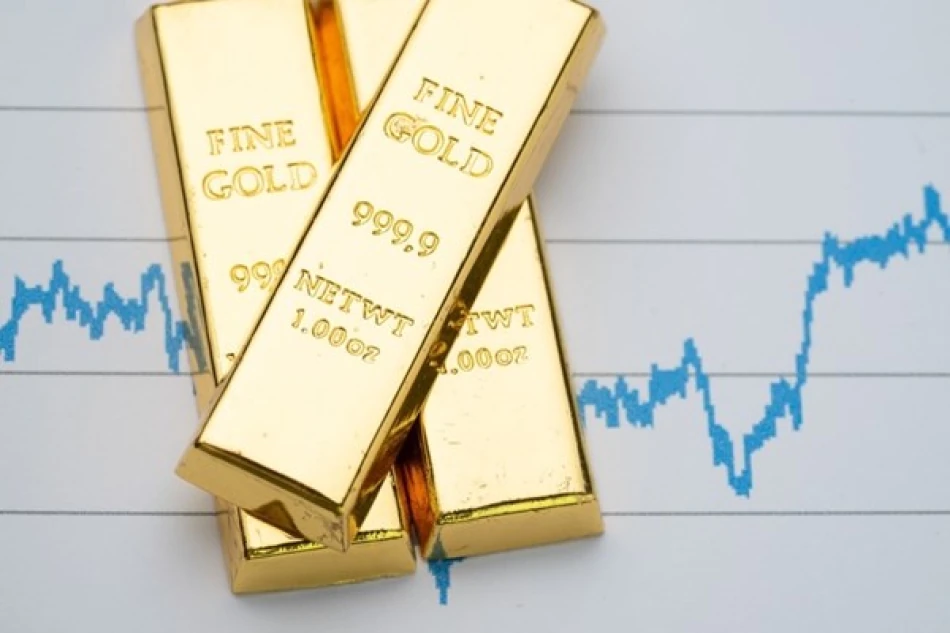
Gold Prices Dip Following Washington-Tokyo Agreement
Gold Retreats as Trump-Japan Trade Deal Boosts Risk Appetite, But Dollar Weakness Limits Losses
Gold prices pulled back on Wednesday as investors embraced riskier assets following President Donald Trump's announcement of a trade agreement with Japan ahead of looming tariff deadlines. However, a weakening dollar and declining bond yields prevented steeper losses, keeping the precious metal near multi-week highs and signaling continued underlying demand for safe-haven assets.
Market Movement and Key Levels
Spot gold declined 0.2% to $3,422.95 per ounce by 0459 GMT, retreating from its highest point since June 16 reached earlier in the session. U.S. gold futures similarly dropped 0.2% to $3,436.10, reflecting the market's cautious response to trade developments.
The modest decline comes despite what would typically be considered positive news for risk assets. This suggests gold's recent strength is built on more than just trade war fears, with monetary policy expectations and currency dynamics playing crucial supporting roles.
Trade Deal Details and Market Impact
Japan Agreement Specifics
Trump announced that the United States and Japan had reached a trade agreement involving 15% tariffs on American imports from Tokyo. The deal represents a significant development in the administration's broader trade strategy, potentially serving as a template for future negotiations with other partners.
China Talks on the Horizon
U.S. Treasury Secretary Scott Bessent revealed that American and Chinese officials will meet in Stockholm next week to discuss extending the negotiation deadline to August 12 for a comprehensive trade agreement. This development adds another layer of complexity to global trade dynamics and market sentiment.
Tim Waterer, senior market analyst at CMC Markets, noted: "If more trade deals are signed before August 1st, it could lead to increased overall risk appetite and reduced demand for gold. However, if the dollar remains under pressure, this will keep a return to the $3,500 per ounce level a near-term possibility."
Currency and Bond Market Dynamics
Dollar Weakness Provides Support
The dollar index remained near two-week lows against major currencies, making dollar-denominated gold less expensive for holders of other currencies. This currency dynamic has become increasingly important for gold pricing, often outweighing traditional risk-on/risk-off sentiment.
Bond Yields Signal Economic Concerns
The benchmark 10-year U.S. Treasury yield touched its lowest level since July 9 on Tuesday, reflecting persistent concerns about economic growth and inflation expectations. Lower yields reduce the opportunity cost of holding non-yielding gold, providing fundamental support for the metal.
Broader Precious Metals Performance
The retreat extended across the precious metals complex, with silver falling 0.2% to $39.20 per ounce, platinum declining 0.1% to $1,439.65, and palladium dropping 0.2% to $1,272.50. This synchronized movement suggests the pullback was driven by broad market sentiment rather than metal-specific factors.
Investment Outlook and Strategic Implications
Risk-Reward Balance
The market's muted response to positive trade news highlights the complex calculus facing investors. While trade agreements typically boost risk appetite, concerns about monetary policy, currency debasement, and long-term economic stability continue to underpin gold demand.
Technical and Fundamental Confluence
Gold's ability to hold near recent highs despite positive trade developments suggests strong underlying demand. The combination of technical strength, currency weakness, and low bond yields creates a supportive environment that could drive prices toward the $3,500 level mentioned by analysts.
For investors, the current environment presents both opportunity and complexity. While short-term trade optimism may pressure gold prices, the broader monetary and fiscal backdrop continues to favor precious metals as portfolio diversifiers and inflation hedges.
Most Viewed News

 Layla Al Mansoori
Layla Al Mansoori






